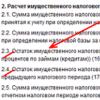What is the bank commission? Accounting for expenses for banking services. What are these expenses: other or non-operating?
Any organization, regardless of its type of activity and the applied taxation regime, pays a commission to the bank for its “everyday” services. For example, for maintaining a current account, for issuing cash, for collection, for issuing a checkbook. But, despite the routine and familiarity of these payments, accountants still have questions related to their correct reflection in accounting.
Bank commissions are other expenses
Costs for banking services in accounting are other expenses(Clause 4, 11 PBU 10/99 “Expenses of the organization”, approved by Order of the Ministry of Finance of Russia dated 05/06/1999 N 33n (hereinafter referred to as PBU 10/99)). It must be remembered that they are recognized regardless of the date of their payment. That is, in the reporting period in which the services were provided by the bank (Clause 18 of PBU 10/99).
True, if your organization is a small business entity (Part 1, Article 4 of the Federal Law of July 24, 2007 N 209-FZ “On the development of small and medium-sized businesses in the Russian Federation”; clause 1 of the Government of the Russian Federation of July 22, 2008 N 556) and you keep your accounting records on a cash basis, then you must recognize bank expenses on the date of their payment (Clause 18 of PBU 10/99; clause 20 of the Standard Recommendations for Small Businesses, approved by Order of the Ministry of Finance of Russia dated December 21, 1998 N 64n).
We prepare accounting entries for bank expenses
Banking services should be reflected in the debit of account 91-2 "Other expenses" in correspondence with settlement accounts, that is, with account 60 “Settlements with suppliers and contractors” or 76 “Settlements with various debtors and creditors” (Instructions for the use of accounting, approved by Order of the Ministry of Finance of Russia dated October 31, 2000 N 94n). Although many are accustomed to writing off amounts paid to the bank from the credit of account 51 “Settlement accounts” directly to the debit of account 91-2, bypassing the settlement accounts. After all, as a rule, the bank provides the service and charges for it by debiting the required amount from the account on one day. And in this case, you can really reflect bank commissions this way - there will be no error. But in some situations, the date of recognition of an expense, for example, a commission for the bank’s production of salary plastic cards, may not coincide with the date of its payment. And then a debt will arise, which you need to show using account 60 or 76.
If you are provided with services subject to VAT (for example, issuing a bank card with sample signatures (Letters of the Ministry of Finance of Russia dated November 1, 2008 N 03-07-05/43, dated March 13, 2007 N 03-07-05/10), cash collection money (Subclause 3 of clause 3 of Article 149 of the Tax Code of the Russian Federation), registration of transaction passports for foreign economic contracts (Letter of the Ministry of Finance of Russia dated October 23, 2009 N 03-07-11/261)), then you can deduct input tax if you have an account - invoices from the bank (unless your company is a special regime entity) (Subclauses 3, 3.1, clause 3, Article 149, clause 2, Article 171, clause 1, Article 172 of the Tax Code of the Russian Federation; Article 5 of the Federal Law of December 2, 1990 N 395-1 "On banks and banking activities"). And then it is also more convenient to make entries using account 60 or 76.
In any case, the tax authorities will not be able to fine you, since incorrect reflection of bank expenses in accounting will not lead to errors in reporting (Article 120 of the Tax Code of the Russian Federation; Resolution of the Federal Antimonopoly Service ZSO dated March 30, 2006 N F04-1394/2006(21167-A46-7)) . The maximum that threatens you is that auditors may point out a violation of the accounting methodology for such transactions.
We certified cards with signatures and copies of documents from the bank; the statement separately indicates the amount of VAT and separately the amount excluding VAT. How to conduct it in the bank and what kind of postings will be made? Do I need to get an invoice from the bank for this amount? What kind of wiring is this done? example
Based on the bank statement, enter two outgoing payment orders (for the amount of services and the amount of VAT).
In accounting, reflect the following entries:
Dt 76 (60) Kt 51 – paid for bank services;
Dt 76 (60) Kt 51 – the amount of VAT has been paid;
Dt 91-2 Kt 76 (60) – expenses for paying for bank services are reflected;
Dt 19 Kt 76 (60) – VAT presented by the bank is taken into account.
To accept input VAT for deduction, you must request an invoice from the bank.
The rationale for this position is given below in the materials of the Glavbukh System
For servicing organizations, banks charge them a fee (commission) in accordance with the terms of the concluded agreements. The bank debits the payment for its services from the organization’s account and issues a bank order. Such a write-off can be carried out with prior consent (acceptance) and without the consent of the payer (clause 9.3 of the Regulations approved by the Bank of Russia on June 19, 2012 No. 383-P).
In accounting, reflect the costs associated with paying for banking services as part of other expenses (clause 11 of PBU 10/99). Depending on the terms of the contract on the date of recognition of expenses, make the following entry:
Debit 91-2 Credit 76 (60)– expenses for paying for bank services (bank commission) are reflected.
Reflect the actual debiting of the amount of expenses from the current account by posting:
Debit 76 (60) Credit 51– paid for bank services (bank commission written off).*
The same procedure takes into account the costs associated with the installation and maintenance of the “Bank-Client” system (clause 18 of PBU 10/99).
Oleg Horoshiy
When calculating income tax, expenses for paying for banking services can be taken into account in two ways:
– as part of other expenses associated with production and sales (subclause 25, clause 1, article 264 of the Tax Code of the Russian Federation);
– as part of non-operating expenses (subclause 15, clause 1, article 265 of the Tax Code of the Russian Federation).*
The tax legislation does not establish a procedure for classifying such expenses. Therefore, an organization can develop it independently (clause 4 of Article 252 of the Tax Code of the Russian Federation). This conclusion is confirmed by letters of the Ministry of Finance of Russia dated April 20, 2009 No. 03-03-06/2/88, dated March 2, 2006 No. 03-03-04/1/167 and resolutions of the Federal Antimonopoly Service of the Moscow District dated May 21, 2008. No. KA-A40/3937-08 and the East Siberian District dated May 2, 2006 No. A33-21067/05-F02-1877/06-S1.
If an organization determines income tax using the accrual method, include expenses for paying for banking services in the calculation of the tax base in the month in which these expenses arose under the terms of the banking agreement (paragraph 2, paragraph 1, article 272 of the Tax Code of the Russian Federation). When using the cash method, such expenses are recognized at the time money is written off from the current account (subclause 1, clause 3, article 273 of the Tax Code of the Russian Federation).*
For information on the specifics of tax accounting for costs of factoring services, see How to take into account in accounting and taxation the receipt of financing for the assignment of a monetary claim (factoring).
Banking transactions listed in Article 5 of Law No. 395-1 of December 2, 1990 (except for collection) are exempt from VAT (subclause 3, clause 3, article 149 of the Tax Code of the Russian Federation). However, in practice, banks can provide other services to organizations (for example, factoring services, issuing transaction passports for foreign trade contracts, etc.). When providing such services, banks are recognized as VAT payers. Consequently, if all mandatory conditions are met, the VAT amount presented by the bank can be deducted by the organization (clause 1 of Article 172 of the Tax Code of the Russian Federation).
Situation: Are the bank's services for witnessing signatures when issuing a card with sample signatures and the organization's seal, certifying copies of constituent documents, as well as for carrying out currency control subject to VAT?
Yes, they are taxable.*
The chief accountant advises: there are arguments according to which the bank’s services for issuing cards with sample signatures and seal imprints are not subject to VAT. They are as follows.
Issuing cards with sample signatures and a seal imprint is a prerequisite for opening a bank account. This means that this operation cannot be considered as an independent service subject to VAT. This conclusion is confirmed by some arbitration courts (see, for example, the resolution of the Federal Antimonopoly Service of the Volga District dated July 14, 2009 No. A65-27027/2007). In this regard, the bank that issues the card for the organization may not issue an invoice to it.
Depending on the actions of the bank, the organization:
– accepts the VAT amount for deduction if, when issuing the card, the bank issued an invoice with the allocated tax amount (clause 1 of Article 172 of the Tax Code of the Russian Federation);
– includes the entire cost of services for issuing a card, if the bank has not issued an invoice to the organization.*
Oleg Horoshiy
State Advisor to the Tax Service of the Russian Federation, 2nd rank
Input VAT
Input VAT amounts presented by suppliers when purchasing goods (works, services, property rights) should be reflected by posting:
Debit 19 Credit 60– VAT presented by the supplier is taken into account.*
Reflect the deduction of input VAT amounts by posting:
Sincerely,
Tatyana Gnedysheva, expert of the BSS "System Glavbukh".
Answer approved by Natalia Kolosova,
Head of the VIP support department of the BSS System Glavbukh.
In which accounting account should I put expenses for bank services: certification of documents, opening an account, for providing access to the client bank? At the same time, the organization does not operate and does not receive income?
Answer
Your question from 01/28/2016«»
Please note that. Account for assets according to the new rules. Read more in the magazine
In accounting, reflect the costs associated with paying for banking services as part of other expenses (). Depending on the terms of the contract on the date of recognition of expenses, make the following entry:
Debit 91-2 Credit 76 (60)
Debit 76 (60) Credit 51
Newly created organizations, as well as organizations that do not have income at the current moment of activity, can include these costs as expenses for tax purposes. The main condition is that the organization’s activities as a whole are aimed at generating income. Even if the income will be received in the future. Therefore, if an organization incurs costs, expecting to receive revenue in the future, they can be taken into account for tax purposes. If, at the end of the tax period, such expenses lead to a loss, its amount can be carried forward to the future.
Methods of accounting for these costs for tax purposes, depending on the applied taxation system and methods of accounting for income and expenses, are set out in the file.
Rationale
How to reflect payment of bank expenses in accounting
For servicing organizations, banks charge them a fee (commission) in accordance with the terms of the concluded agreements. The bank debits the payment for its services from the organization’s account and issues a bank order. Such write-off can be carried out with prior consent (acceptance) and without the consent of the payer (Regulations approved).
In accounting, reflect the costs associated with paying for banking services as part of other expenses (). Depending on the terms of the contract on the date of recognition of expenses, make the following entry:
Debit 91-2 Credit 76 (60)
- expenses for paying for bank services (bank commission) are reflected.
Reflect the actual debiting of the amount of expenses from the current account by posting:
Debit 76 (60) Credit 51
- paid for bank services (bank commission written off).
The costs associated with the installation and maintenance of the Bank-Client() system are taken into account in the same manner. *
When calculating income tax, expenses for paying for banking services can be taken into account in two ways:
- as part of other expenses associated with production and sales ();
- as part of non-operating expenses ().
The tax legislation does not establish a procedure for classifying such expenses. Therefore, the organization can develop it independently (). This conclusion is confirmed by letters from the Ministry of Finance of Russia, and resolutions of the FAS and.
If an organization determines income tax using the accrual method, include expenses for paying for banking services in the calculation of the tax base in the month in which these expenses arose under the terms of the banking agreement (). When using the cash method, such expenses are recognized at the time the money is debited from the current account (). *
Situation: Is it possible to take into account bank expenses of a newly created organization using the accrual method? Expenses are incurred at the initial stage of activities aimed at generating income, when the organization has not yet received income
Banking expenses are not directly related to production and sales, therefore, when calculating income tax, they can be taken into account in the same manner as for accounting for indirect expenses ().
When calculating income tax, an organization has the right to take into account indirect expenses incurred during periods when it had no income. If, at the end of the tax period, such expenses lead to a loss, its amount can be transferred to the future (). This follows from. The same point of view is reflected in. Despite the fact that this letter is addressed to an organization applying the simplified tax system, it can also be used by organizations applying the general taxation system.
It should be noted that previously the regulatory agencies took a different position. The letters stated that when calculating income tax, a newly created organization that does not receive income does not have the right to take into account current expenses. The main argument in support of this position was the organization’s lack of activities aimed at generating income.
With the release of later clarifications, the previous point of view of the Russian Ministry of Finance and the Tax Service has lost its relevance.
Situation: Are the bank's services for witnessing signatures when issuing a card with sample signatures and the organization's seal, certifying copies of constituent documents, as well as for carrying out currency control subject to VAT?
Yes, they are taxable.
The chief accountant advises: there are arguments according to which the bank’s services for issuing cards with sample signatures and seal imprints are not subject to VAT. They are as follows.
Issuing cards with sample signatures and a seal imprint is a prerequisite for opening a bank account. This means that this operation cannot be considered as an independent service subject to VAT. This conclusion is confirmed by some arbitration courts (see, for example,). In this regard, the bank that issues the card for the organization may not issue an invoice to it.
Depending on the actions of the bank, the organization:
- if, when issuing a card, the bank issued an invoice with the allocated tax amount ();
- the entire cost of services for issuing a card, if the bank has not issued an invoice to the organization. *
An example of how bank expenses are reflected in accounting and taxation. The organization applies a general taxation system and calculates income tax using the cash method *
In April, the bank servicing Alfa CJSC, on the basis of concluded agreements, provided the organization with the following services:
- installation of the “Bank-Client” system for a period of 1 year - cost 6,000 rubles. The system went into operation on April 1;
- cash management services - cost 1000 rubles;
In addition, in April, Alfa used the bank’s cash collection services. The cost of services was 5900 rubles. (including VAT - 900 rub.).
Alfa paid for cash management and collection services in April. Installation and maintenance services for the Bank-Client system were paid for in May.
The organization pays income tax monthly.
When calculating income tax for April, Alpha’s accountant included in expenses the commission for cash management services and the cost of collection services in the total amount of 6,000 rubles. (5000 rub. + 1000 rub.).
Costs associated with the installation and maintenance of the Bank-Client system are taken into account when calculating income tax for May.
In April:
Debit 91-2 Credit 60
Debit 91-2 Credit 60
Debit 19 Credit 60
- 900 rub. - “input” VAT on collection services is taken into account;
Debit 68 “VAT calculations” Credit 19
- 900 rub. - “input” VAT is accepted for deduction;
Debit 91-2 Credit 60
Debit 91-2 Credit 60
- 1000 rub. - the cost of services for servicing the Bank-Client system for April was expensed;
Debit 60 Credit 51
- 6900 rub. (1000 rub. + 5900 rub.) - money is debited from the current account to pay for bank services.
Under the cash method, only paid expenses are reflected in tax accounting. Therefore, the cost of installation and maintenance services for the Bank-Client system, paid in May, does not reduce taxable profit for April. A temporary difference arises in accounting, from which a deferred tax asset is accrued.
Debit 09 Credit 68 “Calculations for income tax”
- 1400 rub. ((6000 rub. + 1000 rub.) × 20%) - a deferred tax asset is accrued from the difference between the amount of bank expenses reflected in accounting and tax accounting.
Debit 60 Credit 51
- 7000 rub. (6000 rub. + 1000 rub.) - paid for installation and maintenance services of the “Bank-Client” system for April;
Debit 68 “Calculations for income tax” Credit 09
- 1400 rub. - the deferred tax asset is written off;
Debit 91-2 Credit 60
- 1000 rub. - expenses for servicing the “Bank-Client” system for May are taken into account;
Debit 60 Credit 51
- 1000 rub. - expenses for servicing the “Bank-Client” system were paid for May.
The Alpha accountant makes the same entries throughout the entire period of operation of the Bank-Client system.
- From recommendation
- From recommendation
- From recommendation
How to reflect payment of bank expenses for tax purposes. The organization applies a special tax regime
If an organization has chosen income as an object of taxation, then when calculating the single tax, bank expenses do not reduce the tax base (). If an organization pays a single tax on the difference between income and expenses, the cost of paying for banking services reduces the tax base in the same manner as when calculating income tax (Article 346.16 of the Tax Code of the Russian Federation). The only difference is that with simplification, any expenses are recognized as they are actually paid (). *
An example of how bank expenses are reflected in accounting and taxation. The organization applies a simplification and calculates tax on the difference between income and expenses *
In March, the bank servicing Alfa CJSC, on the basis of concluded agreements, provided the organization with the following services:
- installation of the “Bank-Client” system for a period of 1 year - cost 6,000 rubles. The system went into operation on March 1;
- monthly maintenance of the “Bank-Client” system - cost 1000 rubles. (annual maintenance cost - 12,000 rubles);
- cash management services - cost 1000 rubles.
In addition, in March, Alfa used the bank’s cash collection services. The cost of services was 5900 rubles. (including VAT - 900 rub.).
Alfa paid for cash management and collection services in March. Installation and maintenance services for the Bank-Client system were paid for in April.
When calculating the single tax for the first quarter, Alpha’s accountant reflected as expenses the commission for cash management services and the cost of collection services in the total amount of 6,900 rubles. (5900 rub. + 1000 rub.).
Costs associated with the installation and maintenance of the Bank-Client system are taken into account when calculating the single tax for the six months.
The following entries were made in Alpha's accounting.
Debit 91-2 Credit 60
- 1000 rub. - the commission for settlement and cash services was expensed;
Debit 91-2 Credit 60
- 5000 rub. - the cost of cash collection services is expensed;
Debit 91-2 Credit 60
- 900 rub. - charged to the expenses of “input” VAT on collection services;
Debit 91-2 Credit 60
- 6000 rub. - the costs of installing the “Bank-Client” system are reflected;
Debit 91-2 Credit 60
1000 rub. - the cost of services for servicing the Bank-Client system for March was expensed;
Debit 60 Credit 51
- 6900 rub. (RUB 1,000 + RUB 5,900) - money was debited from the current account to pay for bank services for cash management and collection services.
In April:
Debit 60 Credit 51
- 7000 rub. (6000 rub. + 1000 rub.) - paid for installation and maintenance services of the “Bank-Client” system for March;
Debit 91-2 Credit 60
- 1000 rub. - expenses for servicing the “Bank-Client” system for April are taken into account;
Debit 60 Credit 51
- 1000 rub. - expenses for servicing the “Bank-Client” system were paid for April.
The accountant reflected these amounts in.
UTII
The object of UTII taxation is imputed income (). Therefore, when calculating UTII, expenses for paying for banking services are not taken into account. *
OSNO and UTII
The costs of paying for bank services related to activities that fall under the general taxation system should be taken into account when calculating income tax.
If an organization applies a general taxation system and pays UTII and bank expenses cannot be attributed to one of the types of activities, then (). *
One of the first partners with which any enterprise enters into a relationship is a bank. Opening a current account, making payments, registering currency transactions, buying or selling currency - all this is possible only if you have an agreement with a banking organization. The bank, like any partner providing services, issues invoices for payment or debits amounts from the organization’s current account for the bank’s services provided. How to correctly reflect such business transactions in the 1C: Accounting program, edition 3.0 will be discussed in this article.
Bank services can be combined into two large groups:
- Services not subject to VAT;
- Services subject to VAT.
Each group of services has its own peculiarities of generating accounting entries.
Services not subject to VAT are reflected in accounting accounts in the following order:
- D 91.02 (Other expenses) – D 51 (Current account) – bank commission amounts are written off as other expenses.
Services subject to VAT are reflected in accounting accounts in the following order:
- D 76 (Settlements with various debtors, creditors) – D 51 (Current account) – funds were transferred from the current account as a reflection of the bank’s commission;
- D 91.02 (Other expenses) - D 76 (Settlements with various debtors and creditors) - accounts receivable are written off as other expenses as expenses for bank services;
- D 19 (VAT on purchased services) – K 76 (Settlements with various debtors and creditors) – VAT on purchased bank services is reflected.
Let's consider the reflection of each group of bank services in 1C 8.3.
Bank services not subject to VAT - registration method in 1C 8.3
The formation of posting D91.02-K51 in 1C is carried out using the standard document “Write-off from the current account”. As a rule, the bank withholds the commission directly, using a payment order. Withholding information is provided in the form of a bank statement. The line in the bank statement about the write-off of the commission is actually the document “Write-off of non-cash funds”.
Most often, these documents are uploaded into the accounting system from the client bank - a special banking program, but we propose to understand in detail the features of manual generation of write-off documents, then editing the uploaded documents will not be difficult.
From the “Bank and Cash Office” section of the main interface of the system, let’s go to the document journal “Bank Statements”.
You can create two types of documents in the journal – receipt (+) and write-off (-) on the organization’s current account. Documents are created by clicking on the appropriate button.

Let's create a write-off document and fill it out. First, select the desired type of operation. By default, Payment to Supplier will be offered. Select Bank Commission from the drop-down list (in 1C 8.3).

- Let's adjust the date;
- We indicate the incoming order number and date;
- We will select a recipient and organization;
- Fill in the required amount and cash flow item;
- The payment purpose is filled in automatically. Let's leave it unchanged for reference.
Let us pay special attention to the “Confirmed by bank statement” detail, which is set by default. Only its installation will allow you to generate transactions after posting the document.

Let's go through the document and look at the postings for accounting for bank commissions.


Postings in 1C exactly correspond to the required accounting records to reflect the bank commission.
Bank services subject to VAT - registration method in 1C 8.3
Bank services subject to VAT are reflected in 1C 8.3 in two stages. Moreover, the sequence of these stages can be completely arbitrary.
To register expenses for bank services, we use the document “Receipt (act, invoice)” from the “Purchases” section of the main interface of the system. This is the first stage of action to carry out the bank commission subject to VAT.

Let’s create a document with the type of operation “Services (act)”.

Let's fill it with the necessary details:

Let's change the settlement accounts, because... by default we were offered to use 60.01 and 60.02, but we need to replace these accounts with 76.09 “Settlements with different debtors and creditors”.

In the cost accounting accounts, we will edit the account for 91.02 and fill in the necessary analytics for other expenses. Please note that the VAT account is automatically set as 19.04.

After filling out the details of the header and tabular part, all that remains is to register the incoming invoice using a special tool in the footer of the document.
The registered invoice appears as a hyperlink in the document.

After posting the document, we will check the generated transactions in 1C.

In the second step, we will create a debit document from the current account in order to close the debt on account 76.09 created by the receipt document.
Let us remember that at the beginning of the article we already worked with a similar document. In the current conditions, it is necessary to use another type of document transaction - “Payment to supplier”. But to correctly offset the debt, it is necessary to replace the settlement accounts with 76.09.

After completing the document, we will make sure that the accounting entries are correct.

The debt for bank services is closed.
The study of all options for reflecting bank commissions in 1C 8.3 has been completed.
The bank commission, the accounting entries for which we provide in the article, is a payment that is paid by an organization for the provision of certain types of services. Operational servicing involves the conclusion of an agreement between a credit institution and a client. Among the mandatory conditions of such an agreement are commission payments, their tariff and payment procedure (Article 29 No. 395-1-FZ).
A service agreement is signed for each type of service provided by the credit institution. When concluding a banking service agreement, it is necessary to specify the format of commission payments - one-time, periodic or advance payment. Among the services for which bank fees are charged are:
- RKO - settlement and cash services;
- currency transactions;
- collection;
- lending and loan support;
- use of leased property, as well as trust management of property objects;
- rental of cells;
- remote customer service;
- cash withdrawal, etc.
The commission paid for issuing cash to a client is determined as a percentage of the amount issued. Most of the services provided by the bank for a fee are not subject to value added tax, so accounting entries are made directly to the cash account. If the transaction is subject to VAT, then the expense account is used for postings.
Accounting
Accounting for bank remuneration for non-profit organizations is carried out under account 91 “Other income and expenses”, subaccount 91.2 “Other expenses” (clause 11 of PBU 10/99). If a bank commission is returned, transactions are generated on account 76 “Settlements with various debtors and creditors”.
Budget accounting is carried out in accordance with Instruction No. 174n.
Let's present the main transactions for non-profit and budget organizations in the table:
| accounting entry | the name of the operation |
|---|---|
| NPO | |
| Dt 91.2 Kt 51 | Write-off of bank commission - postings in a situation where the transaction is not subject to VAT |
| Dt 60 Kt 51 | Bank interest has been written off - the transaction is subject to VAT |
| Dt 91.2 Kt 60 | Calculation of commission payments to a credit institution |
| Dt 19 Kt 60 | VAT reflected |
| Dt 76 Kt 51 | Wrong reward was withheld |
| Dt 51 Kt 76.2 | The bank returned the commission - postings for erroneous debits |
| Dt 51 Kt 91.1 | Return of excessively withheld remuneration |
| State-financed organization | |
| Dt 2.205.31.560 Kt 2.401.10.130 | Accrual of debt for services rendered |
| Dt 2.201.11.510 Kt 2.205.31.660 | Income received by the institution for services provided |
| Dt 2.401.20.226 Kt 2.302.26.730 | Commission payment accrued to the bank |
| Dt 2.302.26.830 Kt 2.201.11.610 | Transfer of bank commission payment |
Read also...
- Consultation for parents "intellectual games for developing the thinking of older preschoolers" Verbal game complete the sentence for preschoolers
- English Quiz: Basic Questions and Organizational Features
- Olga Golodets: biography, personal life, family, husband, children - photo
- Yuri Konstantinovich Shafranik: biography Shafranik oil


















